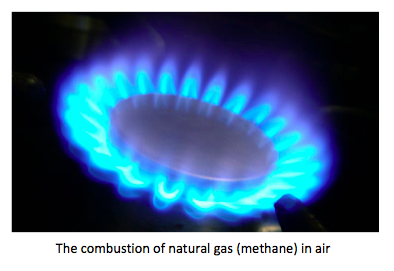Topics 5 & 15
 5 (
5 (
 9 h) & 15 (
9 h) & 15 ( 7 h) : Energetics/thermochemistry
7 h) : Energetics/thermochemistry
Introduction
If bonding is “the key to understanding Chemistry” (see Topics 4 & 14 ) then Energetics/thermochemistry is equally important as it underpins the whole of bonding. There are several ways in which Chemistry can be defined but essentially when a chemical reaction occurs bonds are broken and new bonds are formed. Breaking bonds requires energy and energy is given out when new bonds are formed.
Some points to consider
At Standard Level this topic looks at the enthalpy change that occurs during a chemical reaction. We use the word enthalpy and not heat energy but certainly for Standard Level (and in truth also at Higher Level) the distinction between the two is not important. We do emphasise that most measurements for ∆H are done under standard conditions but not the fact that ∆H should only be used as the term when the pressure remains constant.
This topic lends itself to good practical work. Through the practical work students can understand the need for E = mass x specific heat capacity x temperature rise rather than just fit numbers into a remembered equation (q = mcΔT). They can also gain an understanding of what is meant by an exothermic reaction and the fact that not all enthalpy changes can be determined directly. Hopefully they can also understand that Hess’s Law is simply another way of stating the First Law of Thermodynamics (Law of Conservation of Energy).
 What is worth stressing throughout all of the sub-topics in Energetics/thermochemistry is the need to consider the states. I have even seen teachers, text book authors and lecturers at university (let alone students) use average bond enthalpies wrongly. For example, when determining the enthalpy change for the hydrogenation of unsaturated fats. It needs to be understood that you cannot just use average bond enthalpies as these only refer to the gaseous state whereas unsaturated fats are normally liquids under standard conditions. Changing state involves an enthalpy change. Another example where mistakes are often made is in calculations involving enthalpies of combustion (see image on the right). The definition of standard enthalpy of combustion involves water in the liquid state at 25 oC. Using just average bond enthalpies is bound to give the wrong answer unless the enthalpy change for the change of state in going from gaseous to liquid water is also included.
What is worth stressing throughout all of the sub-topics in Energetics/thermochemistry is the need to consider the states. I have even seen teachers, text book authors and lecturers at university (let alone students) use average bond enthalpies wrongly. For example, when determining the enthalpy change for the hydrogenation of unsaturated fats. It needs to be understood that you cannot just use average bond enthalpies as these only refer to the gaseous state whereas unsaturated fats are normally liquids under standard conditions. Changing state involves an enthalpy change. Another example where mistakes are often made is in calculations involving enthalpies of combustion (see image on the right). The definition of standard enthalpy of combustion involves water in the liquid state at 25 oC. Using just average bond enthalpies is bound to give the wrong answer unless the enthalpy change for the change of state in going from gaseous to liquid water is also included.
At Higher Level the Born-Haber cycle can be taught as ‘just another enthalpy cycle’ although you will need to stress the importance of the lattice enthalpy. Where Higher Level really differs is that it brings in Gibbs free energy and the concepts of entropy and spontaneity. A student who really understands and can apply the equation ∆G = ∆H - T∆S is well on his or her way to understanding Chemistry.
The links on the left give you teaching tips etc. for each of the sub-topics together with questions and answers for each sub-topic.
Once you have finished teaching the whole topic you can give the multiple choice tests on Energetics/thermochemistry (together with answers):![]()
![]() 5. Energetics & thermochemistry
5. Energetics & thermochemistry![]()
![]() 5 & 15. Energetics & thermochemistry (1) and/or
5 & 15. Energetics & thermochemistry (1) and/or ![]()
![]() 5 & 15. Energetics & thermochemistry (2)
5 & 15. Energetics & thermochemistry (2)

 IB Docs (2) Team
IB Docs (2) Team